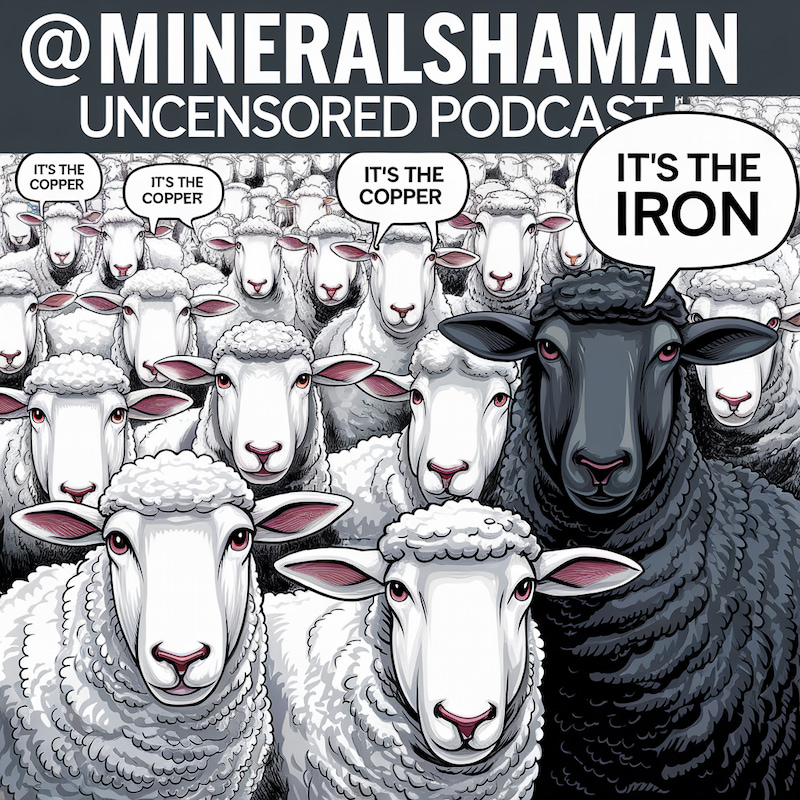Beneath the Skin: The Unseen Impact of Metals in Tattoo Inks
In the vibrant world of tattoos, where art meets skin, a hidden story unfolds—one of metals, molecules, and the intricate dance of human physiology. As someone who has traversed the landscape of body art and unexplained health issues, I’ve found myself at the intersection of personal experience and scientific inquiry. This journey has led me to explore the often-overlooked presence of aluminum and other metals in tattoo inks, and their potential impact on our health.
The Canvas Beneath: Understanding Tattoo Ink Composition
Modern tattoo inks are a complex cocktail of pigments, carriers, and, as research reveals, a surprising array of metals. A groundbreaking study by Cansever and Sogut (2022) shed light on this metallic menagerie, identifying significant levels of aluminum, copper, iron, and zinc in various tattoo inks. Their findings highlight a crucial point: the metal content in these inks varies widely between colors and brands, introducing an element of unpredictability to what we’re actually embedding in our skin.
Aluminum: The Silent Intruder
Among these metals, aluminum stands out as a particular concern. Its presence in tattoo inks isn’t just incidental—it’s often intentional, used to enhance colors or alter ink properties. But as Exley and Clarkson (2020) poignantly note, “Aluminium is not a member of the human metallome.” In other words, our bodies haven’t evolved mechanisms to process this ubiquitous metal effectively.
My personal experience with unexplained health issues post-tattooing led me down a rabbit hole of research, where aluminum’s potential role in immune system disruption became a focal point. The work of Exley (2020) on aluminum adjuvants in vaccines provides a sobering parallel—when injected, aluminum has “uninterrupted access” to our system, bypassing our body’s usual filtration processes.
The Aluminum-Adjuvant Connection
To truly understand the potential impact of aluminum in tattoo inks, we need to draw parallels with its use as an adjuvant in vaccines. Aluminum adjuvants are specifically designed to provoke an immune response. This property raises questions about the long-term effects of aluminum in tattoo inks.
When we receive a tattoo, we’re essentially injecting a complex mixture, including aluminum compounds, directly into our skin. Unlike ingested aluminum, which the body can filter to some extent, tattooed aluminum bypasses many of our natural defenses. This direct introduction into the dermal layer means that aluminum from tattoos has, as Exley puts it, “uninterrupted access” to our system, including potential pathways to our brain and central nervous system.
The concentration of aluminum in tattoo inks can be surprisingly high. Cansever and Sogut (2022) found aluminum levels ranging from 1191.1 to 3424.9 mg/kg in the tattoo inks they analyzed. To put this in perspective, the amount of aluminum in a single tattoo could potentially exceed what we might be exposed to through other sources over an extended period.
Chronic Immune Activation: A Hidden Concern
One of the most significant concerns with aluminum in tattoo inks is the potential for chronic immune activation. Just as aluminum adjuvants in vaccines are designed to stimulate the immune system, the constant presence of aluminum in tattoo ink may lead to a persistent state of immune response.
This chronic activation could manifest in various ways, from localized skin irritation to more systemic issues. For individuals with predispositions to inflammatory conditions or heightened sensitivity to metals, this constant immune stimulation could potentially trigger or exacerbate health issues.
The Cellular Carriers: Macrophages and Aluminum
Another crucial aspect of aluminum’s behavior in the body involves macrophages—key players in our immune system. Research has shown that macrophages can engulf aluminum particles, becoming what we might call “cellular Trojan horses.” These aluminum-laden cells can survive for weeks or even months, potentially transporting their metallic cargo to various parts of the body, including across the blood-brain barrier.
This mechanism of transport opens up the possibility for long-term, systemic effects from tattoo ink aluminum. It’s not just about what happens at the site of the tattoo, but how these metals might influence our health in unexpected ways throughout our body.
Aluminum also interferes with iron metabolism by occupying transferrin, a key iron-carrying protein. When transferrin is busy shuttling aluminum around, it cannot carry iron. The effects of this ionic mimicry can be significant as proper iron transport is required for cellular respiration.
Beyond Aluminum: A Metallic Medley
While aluminum captured my attention due to personal experiences, it’s just one player in a larger ensemble. Cansever and Sogut’s (2022) analysis revealed a veritable periodic table in tattoo inks:
- Copper: Essential for life but not so helpful when embedded in the skin.
- Iron: Crucial for oxygen transport, yet an excess can spawn harmful free radicals.
- Zinc: Vital for immune function, but in high doses, it can interfere with other mineral balances.
- Nickel: A common allergen, capable of triggering significant skin reactions.
Each of these metals, while serving important biological functions, can become problematic when introduced in tattoo ink form—especially considering the unique delivery method of tattooing.
The Lymphatic Highway: Unexpected Journeys of Ink and Metal
One might assume that tattoo ink stays put, but research tells a different story. Schreiver et al. (2017) demonstrated that tattoo pigments—and by extension, the metals they contain—can migrate to regional lymph nodes. This migration opens up the possibility of systemic effects, far removed from the original tattoo site.
For those with metal sensitivities or compromised detoxification pathways, this lymphatic transport could potentially trigger wide-ranging symptoms, complicating the process of identifying the root cause.
Individual Variances: Why Your Tattoo Experience Is Unique
Perhaps the most critical takeaway from this exploration is the importance of individual physiology. The saying “one person’s medicine is another’s poison” takes on new meaning in the context of tattoos. Factors such as ancestral predisposition, overall toxic burden, and even ethnic background can influence how one’s body responds to the metals in tattoo inks.
This individuality extends beyond genetics. Family health history, environmental exposures, and even the state of one’s microbiome can play a role in determining sensitivity to metals like aluminum. It’s a complex interplay that underscores the need for personalized consideration before getting inked.
Navigating the Inked Landscape: Precautions and Considerations
Armed with this knowledge, how do we approach the world of tattoos? Complete avoidance isn’t necessary or realistic for many. Instead, consider these steps:
- Research your artist and their inks. Some manufacturers provide detailed composition information.
- Consider patch testing, especially if you have known metal sensitivities.
- Be aware of your body’s reactions post-tattooing. Not all adverse reactions are immediate or visible on the skin.
- Support your body’s natural detoxification processes through nutrition and lifestyle choices.
- If you’re particularly concerned about aluminum, look for inks that explicitly state they are aluminum-free.
Tattoo Removal: Navigating the Options and Risks
For those experiencing adverse reactions to their tattoos or simply wishing to remove them, it’s crucial to understand the available options and their potential risks, especially in light of what we know about metal content in tattoo inks.
The Dangers of Laser Removal
Laser tattoo removal is often touted as an effective method for eliminating unwanted tattoos. However, this process comes with significant risks, particularly for those already experiencing issues related to their tattoos.
The fundamental problem with laser removal is that it doesn’t actually remove the tattoo ink from your body. Instead, it breaks down the ink particles into smaller components. These fragments are then cleared by your body’s immune system, primarily through the lymphatic system.
For individuals dealing with metal sensitivities or immune reactions to their tattoos, laser removal can potentially exacerbate these issues. By breaking down the ink, you’re essentially releasing a concentrated dose of these metals and other ink components into your system all at once. This sudden influx can overwhelm your body’s detoxification pathways and potentially trigger more severe reactions.
Moreover, the process of breaking down certain pigments can create new, potentially toxic compounds. For example, some red inks containing mercury might form toxic mercury compounds when subjected to laser treatment.
Bentonite Clay: A Gentler Approach
For those seeking a less invasive method, some practitioners have found success with bentonite clay treatments. This natural clay has strong absorptive properties and may help draw out some ink components over time.
The process typically involves applying a bentonite clay paste to the tattooed area and allowing it to dry. As it dries, it may pull small amounts of ink towards the surface of the skin. While this method is much slower than laser removal, it’s also gentler on the body and doesn’t risk suddenly releasing large amounts of ink components into your system.
It’s important to note that the effectiveness of this method can vary greatly depending on the individual, the type of ink used, and how deeply the ink was placed in the skin. It’s also a process that requires patience, often taking months or even years to see significant fading.
Skin Grafting: A Last Resort
In severe cases where individuals are experiencing extreme reactions to their tattoos, skin grafting might be considered. This surgical procedure involves removing the tattooed skin and replacing it with skin from another part of the body.
While effective, skin grafting is an invasive procedure that comes with its own risks and potential complications. It should only be considered as a last resort when other methods have failed and the tattoo is causing significant health issues.
Personalized Approach to Tattoo Issues
Given the complexity of tattoo-related health issues and the highly individual nature of how our bodies respond to tattoo inks, there’s no one-size-fits-all solution. What works for one person may not be suitable for another.
If you’re dealing with tattoo-related health issues or considering removal options, I offer personalized consultations to help navigate these complex decisions. Drawing from my own experiences and ongoing research in this field, I work one-on-one with individuals to develop tailored strategies for managing tattoo-related health concerns.
To learn more or to schedule a consultation, please reach out to me directly. Together, we can work towards finding the best path forward for your unique situation.
A Call for Transparency and Further Research
The tattoo industry, while regulated in many aspects, still lacks standardization when it comes to ink composition. As consumers and health advocates, we must push for greater transparency from ink manufacturers and more comprehensive research into the long-term effects of tattoo inks on human health.
Specifically, we need more studies that look at the long-term impact of aluminum and other metals from tattoo inks on the immune system, brain health, and overall wellbeing. The parallels with vaccine adjuvants provide a starting point, but the continuous exposure from tattoos presents a unique scenario that deserves dedicated research.
Conclusion: Artistry Meets Awareness
The world of tattoos is a beautiful intersection of art, culture, and personal expression. By bringing awareness to the unseen aspects of tattoo inks, we’re not aiming to discourage this form of expression, but rather to empower individuals to make informed decisions.
As we continue to adorn our bodies with ink, let’s do so with a holistic understanding of what we’re introducing beneath our skin. The goal is to foster a tattoo culture that honors both artistic expression and bodily wisdom—where the beauty we wear on our skin exists in harmony with the complex biology beneath it.
In the end, the decision to get a tattoo is deeply personal. By arming ourselves with knowledge about the potential impacts of metals like aluminum in tattoo inks, we can make choices that align not just with our aesthetic desires, but with our health and wellbeing too.
References
- Cansever, I., & Sogut, O. (2022). Are Some Metals in Tattoo Inks Harmful to Health? An Analytical Approach. Chemical Research in Toxicology, 35(12), 2123-2130.
- Exley, C. (2020). An aluminium adjuvant in a vaccine is an acute exposure to aluminium. Journal of Trace Elements in Medicine and Biology, 57, 57-59.
- Exley, C., & Clarkson, E. (2020). Aluminium in human brain tissue from donors without neurodegenerative disease: A comparison with Alzheimer’s disease, multiple sclerosis and autism. Scientific Reports, 10(1), 7770.
- Schreiver, I., Hesse, B., Seim, C., Castillo-Michel, H., Villanova, J., Laux, P., … & Luch, A. (2017). Synchrotron-based ν-XRF mapping and μ-FTIR microscopy enable to look into the fate and effects of tattoo pigments in human skin. Scientific Reports, 7(1), 11395.






